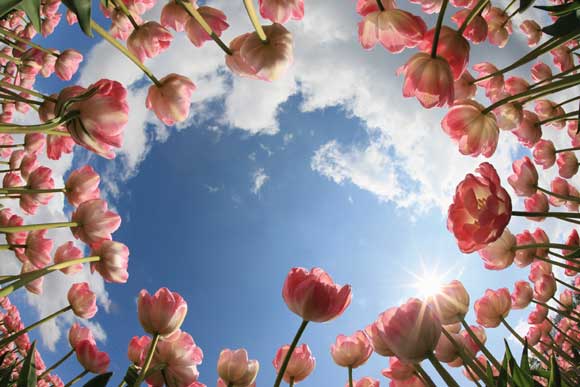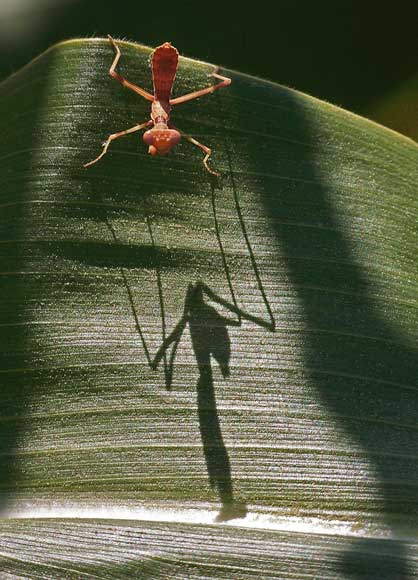How to Photograph Gardens – Light and Weather
Cloudy days can be great for flower details – the lower contrast helps record more of the fine detail. Even rain shouldn’t dampen your enthusiasm, as the tiny raindrops resting on plants can add an extra dimension to your images, especially when photographed close up.
Bright, sunny days, with their harsh unflattering shadows, are rarely a good time for photography, but if you look carefully you can still find photo opportunities that exploit this type of light. In general, during sunny weather, it’s best to restrict your shooting to early mornings and later afternoons when the sun is warmer, softer, lower in the sky, and the long raking shadows provide great photographic potential.

Third Place, Plant Portraits
: Sergey Karepanov
Sergey shot from ground level with a wideangle lens to create a bug’s eye view of these Dutch tulips which has bags of impact.
Canon EOS-1Ds Mark III, EF 15mm f/2.8
Alternatively, try shooting into the light on sunny days. In the right conditions you can capture atmospheric rays of light beaming down onto the garden, close-up details will have a golden halo around their edges and translucent leaves and petals will reveal their inner veins and patterns. Avoid having the sun directly in shot, though – keep it out of the frame and use a lens hood to avoid flare.
Wind is the enemy of garden photography since it blows plants around, causing motion blur. Calm days enable you to use slower shutter speeds and, as a consequence, smaller apertures for maximum depth of field. On breezy days you can stabilise plants by using a thin cane or kebab skewer as a splint – carefully hidden behind the stem.

Finalist, Wildlife
: J. Keith Berger
Direct sun can produce good pictures too. J Keith shot this on a budget compact.
Kodak Z712




